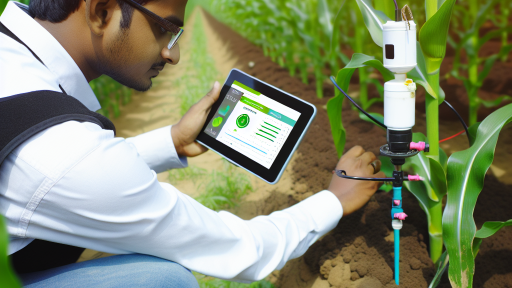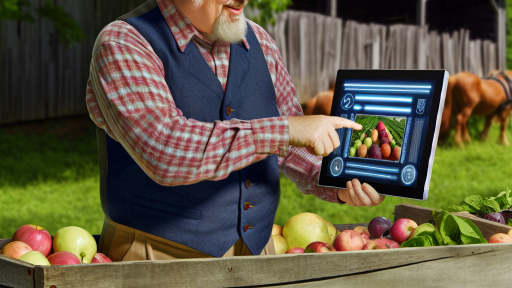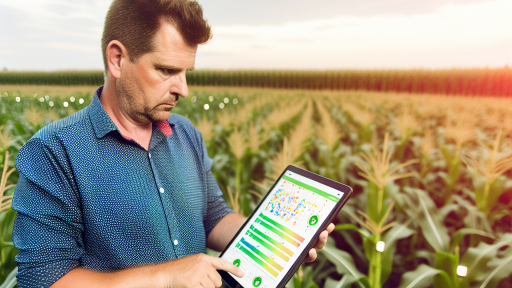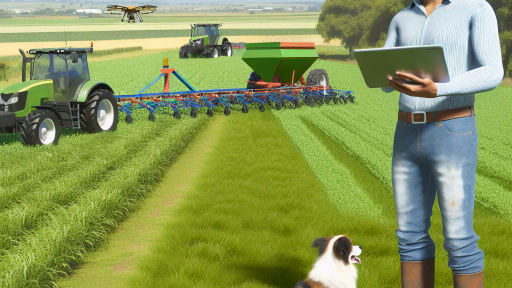Introduction to Precision Agriculture and Its Importance
Precision agriculture enhances crop management through data-driven techniques.
This farming approach significantly improves yield efficiency.
Modern farmers can now utilize technology for better decision-making.
Overall, this method optimizes resources while minimizing waste.
Defining Precision Agriculture
Precision agriculture involves using advanced technologies in farming.
These technologies include GPS, remote sensing, and data analytics.
Farmers collect and analyze data from their fields for improved outcomes.
This approach ensures timely and precise interventions in farming practices.
Benefits of Precision Agriculture
Firstly, it increases crop yields and quality.
Secondly, it reduces the use of input resources, such as water and fertilizers.
Additionally, this method helps in minimizing environmental impact.
Moreover, it enables farmers to save time through automated processes.
Industry Adoption and Economic Impact
Many farmers are transitioning to precision agriculture today.
This shift is driven by the need for higher profitability and sustainability.
Additionally, technology providers are creating affordable solutions.
Transform Your Agribusiness
Unlock your farm's potential with expert advice tailored to your needs. Get actionable steps that drive real results.
Get StartedConsequently, there is a growing market for precision farming technologies.
Overview of Drone Technology in Agriculture
A New Era in Farming
Drones have transformed precision agriculture significantly.
Farmers now utilize aerial technology to enhance crop management.
These unmanned aerial vehicles (UAVs) offer critical data insights.
They monitor crop health, analyze soil conditions, and assess yields.
Key Features of Agricultural Drones
Various drone models suit different farming needs.
Equipped with advanced sensors, they collect essential data.
This data helps in making informed decisions quickly.
- Multispectral imaging provides crop health analysis.
- Infrared sensors detect temperature variations.
- GPS technology enables precise mapping and tracking.
Enhancing Operational Efficiency
Drones streamline various farming processes effectively.
They reduce the time required for field inspections.
Farmers can monitor large areas quickly without physical labor.
In addition, drones minimize resource wastage by targeting interventions.
Cost-Effectiveness and Sustainability
Drone technology offers significant cost-saving advantages.
Farmers experience reduced labor costs and improved crop yield.
Moreover, drones contribute to sustainable farming practices.
They help in the precise application of fertilizers and pesticides.
Challenges and Considerations
Despite their benefits, drone usage also presents challenges.
Regulatory hurdles may limit operational capabilities.
Farmers must also invest in training for effective use.
Weather conditions can impact drone performance and reliability.
Types of Drones Used in Precision Farming
Fixed-Wing Drones
Fixed-wing drones cover extensive areas efficiently.
They usually have longer flight times compared to multi-rotor drones.
This makes them suitable for large farms.
Farmers use them for aerial mapping and surveying fields.
Showcase Your Farming Business
Publish your professional farming services profile on our blog for a one-time fee of $200 and reach a dedicated audience of farmers and agribusiness owners.
Publish Your ProfileMoreover, they can carry various sensors for data collection.
Multi-Rotor Drones
Multi-rotor drones are highly maneuverable.
They can hover in one spot, allowing for detailed inspections.
This feature is essential for spot-checking plants or crops.
The flexibility of these drones makes them ideal for smaller farms.
Additionally, they are often used for spraying fertilizers and pesticides.
Hybrid Drones
Hybrid drones combine features of both fixed-wing and multi-rotor designs.
These drones take off and land vertically like multi-rotor drones.
However, they can also fly longer distances like fixed-wing drones.
This versatility makes hybrids popular among diverse farming operations.
They are capable of performing various tasks, from mapping to spraying.
Agricultural Drones for Crop Monitoring
Many agricultural drones specialize in crop monitoring applications.
They often include advanced imaging technology and sensors.
Farmers utilize these drones to assess crop health effectively.
For instance, they capture images in infrared to detect stress in plants.
This technology enables timely interventions, optimizing harvest yields.
Payload Capacity and Sensor Integration
Drones vary in payload capacity, affecting their usage.
Some can carry heavy sensors or equipment for advanced tasks.
Typical sensors include thermal cameras, multispectral cameras, and LiDAR.
Integrating these sensors enhances the precision of data collected.
This leads to better decision-making for crop management.
Uncover the Details: How Precision Agriculture Enhances Farm Efficiency
Benefits of Using Drones in Crop Monitoring
Enhanced Data Collection
Drones collect data efficiently over large areas.
This technology provides real-time insights into crop health.
Farmers utilize high-resolution images for better analysis.
Consequently, they make informed decisions quickly.
Improved Crop Management
Drones enable precise crop management practices.
They monitor irrigation levels accurately.
Moreover, farmers can assess nutrient requirements effectively.
This precision helps optimize resource usage.
Timely Disease Detection
Drones identify early signs of disease in crops.
By detecting issues early, farmers can act swiftly.
This proactive approach reduces potential losses significantly.
Increased Efficiency
Drones reduce the time needed for manual crop inspections.
This efficiency translates to lower labor costs.
Farmers can focus on other essential tasks.
Sustainable Practices
Using drones supports sustainable farming practices.
They minimize the environmental impact of traditional methods.
Farmers can monitor specific areas, reducing chemical use.
This leads to a healthier ecosystem overall.
Showcase Your Farming Business
Publish your professional farming services profile on our blog for a one-time fee of $200 and reach a dedicated audience of farmers and agribusiness owners.
Publish Your ProfileSee Related Content: The Role of Robotics in Revolutionizing Modern Farming Practices
Role of Drones in Soil Analysis and Health Assessment
Enhanced Soil Mapping
Drones enable detailed soil mapping across large agricultural fields.
They gather high-resolution imagery that reveals variations in soil types.
Farmers use these images to understand soil composition effectively.
Moreover, drones can capture infrared data for assessing vegetation health.
This information helps in determining soil nutrient needs and moisture levels.
Real-Time Data Collection
Drones provide real-time data collection for soil health assessment.
This capability allows farmers to monitor changes quickly.
They can adjust their management practices based on immediate feedback.
Consequently, this approach leads to optimized resource usage.
Farmers can target interventions precisely where they are needed most.
Precision Agriculture Applications
Drones play a crucial role in precision agriculture.
They help in applying fertilizers and other inputs more accurately.
Farmers benefit from reduced costs and minimized environmental impact.
This targeted application contributes to healthier soil ecosystems.
It ultimately leads to enhanced crop yields and better farm profitability.
Soil Health Monitoring
Regular monitoring of soil health is essential for sustainable farming.
Drones equipped with sensors collect data on soil moisture and compaction.
These insights inform farmers when to irrigate or amend the soil.
As a result, it promotes optimal growing conditions for crops.
Farmers can diagnose issues before they escalate into larger problems.
Integration with Agricultural Technologies
Drones integrate seamlessly with other agricultural technologies.
They complement GPS and IoT devices for comprehensive farm management.
This integration ensures data accuracy and enhances decision-making.
Farmers can analyze trends over time for better strategic planning.
Ultimately, this synergy boosts productivity and sustainability.
Uncover the Details: How AI Is Helping Farmers Predict Crop Failures Before They Happen
Data Collection and Analysis: How Drones Enhance Decision-Making
Collecting Essential Data
Drones specialize in collecting essential data across vast agricultural fields.
They utilize various sensors to gather information on crop health and soil conditions.
This data includes temperature, moisture levels, and nutrient deficiencies.
Farmers can analyze this data in real time for immediate insights.
Consequently, they can make timely decisions regarding irrigation and fertilization.
Mapping and Monitoring Fields
Drones provide detailed mapping capabilities of agricultural lands.
They create high-resolution aerial imagery for comprehensive monitoring.
Farmers can detect crop diseases and pest infestations early.
This early detection helps farmers minimize potential damage.
Moreover, drones can monitor crop growth stages, enhancing yield predictions.
Data Analysis and Decision Support
Advanced software analyzes the data collected by drones.
This analysis produces actionable insights for precision farming.
Farmers can optimize resource allocation by identifying areas of need.
Showcase Your Farming Business
Publish your professional farming services profile on our blog for a one-time fee of $200 and reach a dedicated audience of farmers and agribusiness owners.
Publish Your ProfileFor instance, they can target specific areas for watering or pesticide application.
This targeted approach increases efficiency and reduces waste.
Integrating Drones into Farming Practices
Integrating drones into farming practices revolutionizes traditional methods.
Farmers collaborate with agritech companies for tailored solutions.
These partnerships enhance the effectiveness of data collection and analysis.
Subsequently, customized strategies emerge that align with specific crop requirements.
As a result, farmers achieve higher yields with reduced environmental effects.
You Might Also Like: How Drone Technology Is Monitoring the Future of Crop Yields
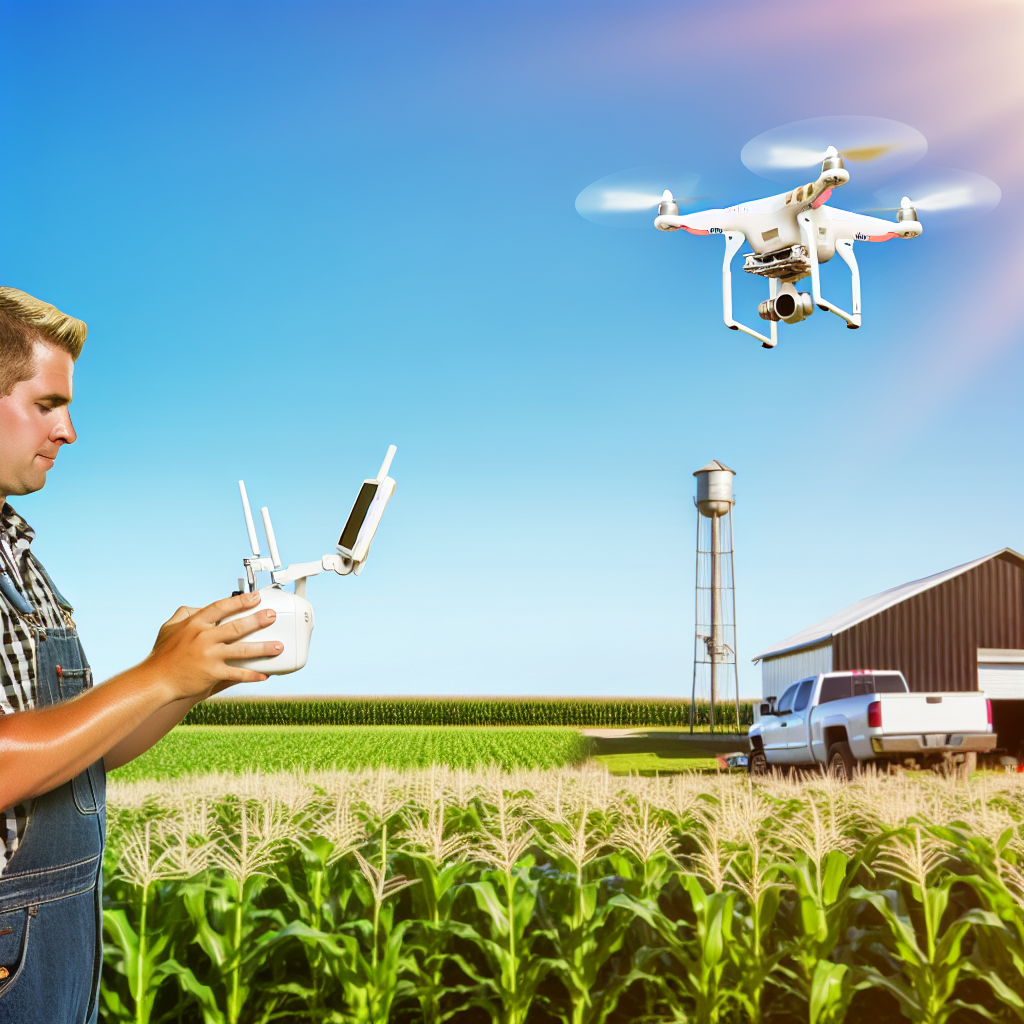
Case Studies: Successful Integration of Drones in Farming Operations
Crop Monitoring in Wine Production
In Napa Valley, California, AgTech Solutions implemented drone technology to enhance grape production.
The company utilized drones for aerial imaging and crop monitoring.
This approach enabled farmers to identify crop stress and nutrient deficiencies.
Consequently, they optimized irrigation schedules and improved overall yield.
By using drones, AgTech Solutions significantly reduced operational costs.
Pest Control in Vegetable Farms
Green Acres Farm in Florida adopted drones for targeted pest control applications.
They deployed drones equipped with advanced imaging sensors.
This technology allowed real-time monitoring of pest populations.
Farmers made precise pesticide applications only where necessary.
As a result, they minimized chemical usage and environmental impact.
Precision Planting in Grain Fields
Midwest Harvest implemented drone technology for precision planting in soybean fields.
Drones provided detailed topographical maps for seed placement.
This data guided farmers in optimizing planting density and depth.
They achieved better crop establishment and reduced waste.
Moreover, this method enhanced soil conservation practices.
Irrigation Management in Orchard Farming
Sunny Orchard Farms in Texas used drones to monitor irrigation needs in their orchards.
Drones assessed soil moisture levels and crop health from above.
They shared this data with farmers in an easy-to-understand format.
Farmers adjusted their irrigation systems based on accurate data.
This led to improved water efficiency and healthier crops.
Yield Estimation for Harvest Planning
Harvest Innovations utilized drones to estimate crop yields in large fields.
This information allowed farmers to plan harvest logistics effectively.
With accurate yield predictions, they managed labor and equipment better.
Additionally, it improved relationships with distributors and markets.
Consequently, farmers experienced higher profitability.
Challenges and Limitations of Drone Use in Agriculture
Regulatory Hurdles
Drones face numerous regulatory challenges in agriculture.
Farmers must adhere to local and federal aviation laws.
Compliance can involve complicated paperwork and permissions.
Furthermore, some regions impose strict flying restrictions.
This can limit the ability to utilize drones effectively.
Technical Limitations
Drone technology is constantly evolving, yet challenges persist.
Battery life remains a critical issue for extensive farming tasks.
Showcase Your Farming Business
Publish your professional farming services profile on our blog for a one-time fee of $200 and reach a dedicated audience of farmers and agribusiness owners.
Publish Your ProfileMoreover, sensors can be sensitive to environmental conditions.
Heavy rainfall or high winds can hinder data collection.
Additionally, terrain variations impact flight stability and accuracy.
Cost Considerations
The initial investment for drones can be significant.
Costs include the drone itself and necessary software.
Moreover, ongoing maintenance and training add to the expense.
Farmers must carefully evaluate their return on investment.
This may deter some from adopting drone technology.
Data Management Issues
Drones collect vast amounts of data during flights.
Managing and analyzing this data can be overwhelming.
Farmers may lack the expertise to interpret complex data sets.
Furthermore, inadequate software can hinder effective data utilization.
Ultimately, poor data management can lead to missed opportunities.
Privacy Concerns
The use of drones raises potential privacy issues for neighboring properties.
Farmers must be aware of privacy laws in their jurisdictions.
Unintended data capture can lead to legal complications.
Therefore, it is crucial to set clear operational boundaries.
Transparency with neighboring farms can help alleviate concerns.
Future Trends: The Evolving Role of Drones in Precision Agriculture
Increasing Adoption of Drone Technology
Drones are becoming essential tools for farmers worldwide.
Many agricultural operations are adopting drone technology for efficiency.
Farmers are discovering new ways to enhance their crop yields.
As technology improves, drone capabilities are also expanding.
This trend will likely continue as more farmers recognize the benefits.
Enhancements in Data Collection and Analysis
Drones enable precise data gathering in agriculture.
Higher-quality data leads to better decision-making for farmers.
Innovative sensing technologies enhance crop monitoring accuracy.
Farmers can now analyze soil health, moisture levels, and pest presence.
Utilizing drones improves real-time analysis, which is crucial for modern farming.
Growth of Autonomous Drones
Autonomous drones are set to revolutionize the agricultural sector.
They can cover large areas with minimal human intervention.
This technology enables efficient land management and crop monitoring.
Farmers will rely more on drones for tasks like planting and spraying.
Future developments will likely include enhanced automation and AI integration.
Integration with Other Technologies
Drones are increasingly being combined with other agricultural technologies.
For instance, they work well with satellite imagery for improved analysis.
This synergy allows for comprehensive crop health assessments.
Moreover, drones can integrate with IoT devices for real-time solutions.
The collaborations enhance the overall effectiveness of precision agriculture.
Environmental Sustainability and Resource Management
Drones contribute to sustainable agriculture practices.
They allow for targeted pesticide application, reducing chemical use.
Showcase Your Farming Business
Publish your professional farming services profile on our blog for a one-time fee of $200 and reach a dedicated audience of farmers and agribusiness owners.
Publish Your ProfileThis focus on precision helps in conserving natural resources.
Farmers can track resource consumption effectively through drones.
As a result, agriculture becomes more environmentally friendly.
Future Research and Development Opportunities
Continued research will drive future innovations in drone technology.
Developers are exploring new materials to make drones more efficient.
Enhanced battery life will allow for longer flights and operations.
Moreover, better sensors will lead to even more precise readings.
Investments in R&D will unlock more capabilities for farmers.
Additional Resources
Drones in agriculture: A review and bibliometric analysis …
Vantage Market Research: Precision Farming Market Growing at …

